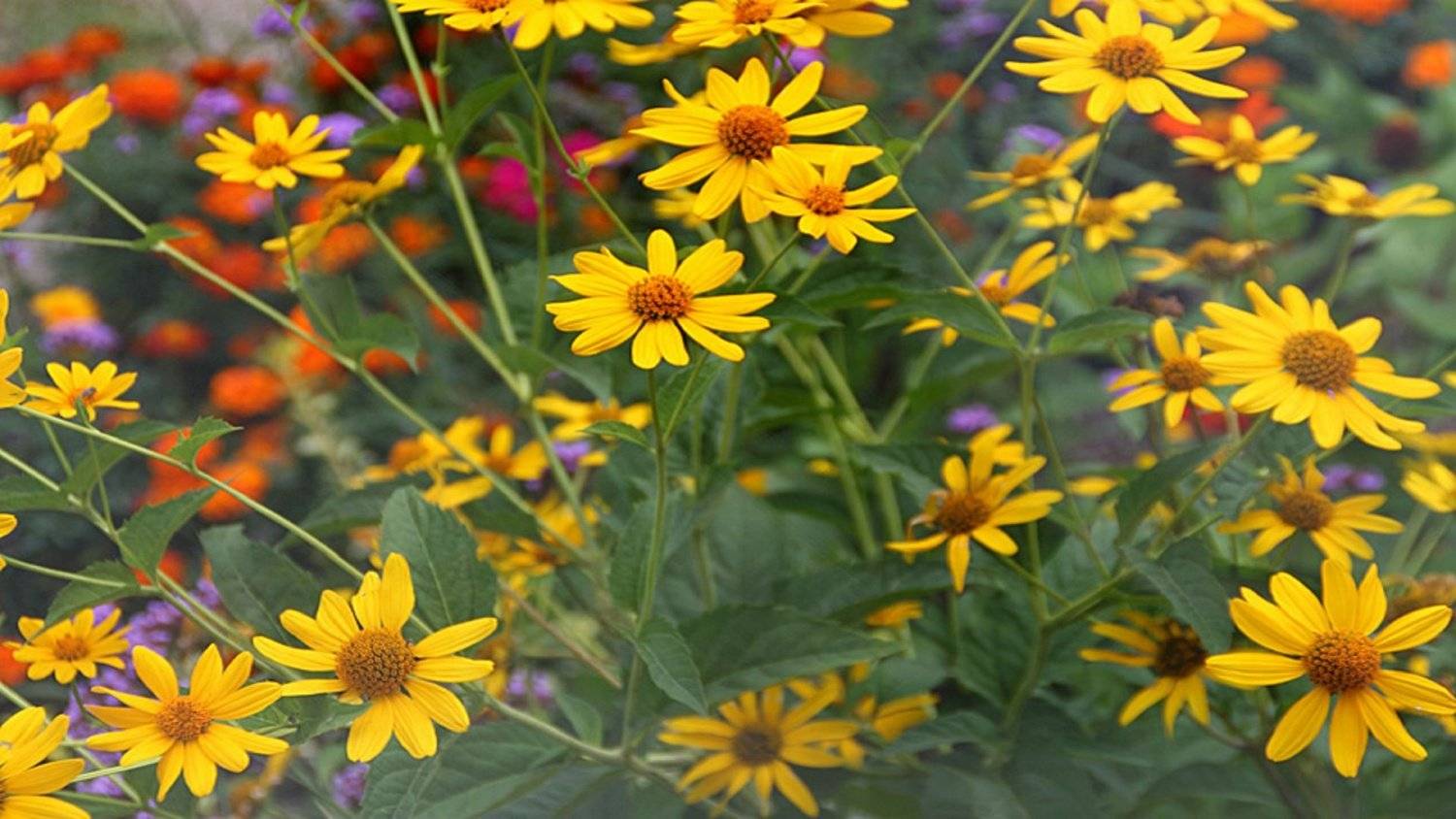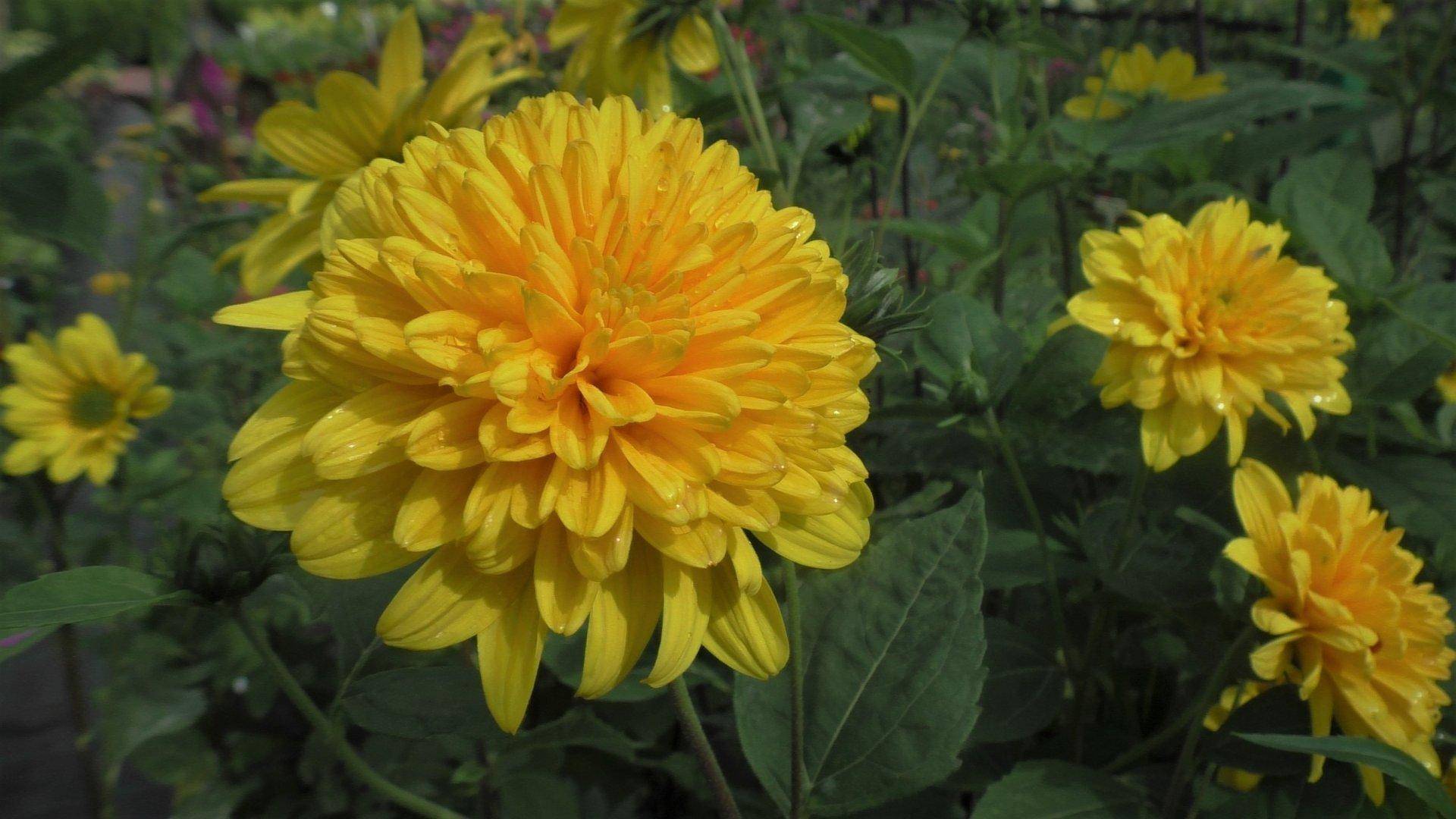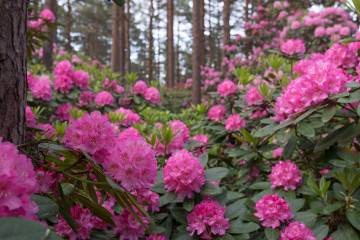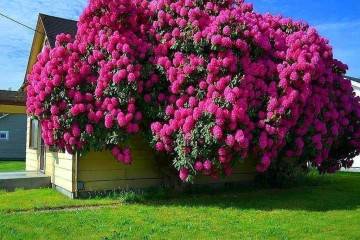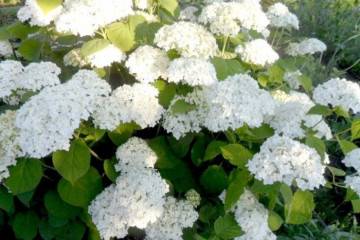Variegated Heliopsis (Heliopsis helianthoides)
Content:
On flower beds in cities and towns, there are different flowers. You can often see chamomile with yellow petals. This is variegated heliopsis. The plant is distinguished by its high growth and special decorative effect. In addition, it is quite unpretentious, for which it is appreciated by many people and is used in landscape design.
What does Heliopsis variegated look like?
Heliopsis is a wonderful plant that has a number of features and characteristics.
Plant characteristics
Heliopsis is a herbaceous plant that is annual or perennial, depending on the variety. The height of the stems can reach one and a half meters, in some cases they require a garter, because the branches can bend down from strong winds. The leaves are arranged alternately, the shade varies from light green to dark green. The shape of the leaves is oblong, with denticles along the edges.
The flowers of the plant are yellow and reach a diameter of 10 centimeters, collected in "baskets". Inflorescences, depending on the type, are double, smooth or semi-double. Flowering begins in July and lasts for 2-2.5 months.
What family does it belong to
Heliopsis belongs to the Asteraceae or Compositae family.
Briefly about the history of appearance
Central and South America are considered the historical area where Heliopsis lives. There it is found in dry steppes, on the outskirts of the forest and near roadsides. However, the cultivated plant grows quite well in the harsh Ural climate. Planting and caring for heliopsis will not be difficult, even for beginners.
Description of species of perennial varieties Heliopsis helianthoides
There are about 15 types of heliopsis. Some of them are perennial, others, on the contrary, grow only for one year. Varieties differ in appearance and have certain characteristics.
Sunflower
This type includes classic plants. Sunflower heliopsis reaches 1 meter, leaves with jagged edges, there are few of them. Inflorescences are large, bright yellow. The core resembles a chamomile, but is larger in size.
Variegated
Plants of this species are distinguished by the variegated color of the leaves. Due to the presence of mutant cells that are unable to produce chlorophyll, light spots and streaks gradually appear on the leaves of heliopsis variegated.
Rough
Also referred to as sunflower. The length of the rough heliopsis reaches one and a half meters. The plant is distinguished by large buds and large flowers, the leaves are large and rough to the touch.
Terry
Terry varieties are distinguished by inflorescences with a large number of petals, which makes the flower volumetric and gives it an attractive appearance. Such types of terry heliopsis look very elegant.
Others
Quite a lot of plant varieties have been bred.They differ in height, shade of petals, splendor of inflorescences. Some varieties of petals are few, and they are arranged in a couple of rows - these are smooth or simple "baskets". Those with slightly more of them are semi-double varieties.
Most popular varieties
There are several of the most interesting and popular varieties of heliopsis. They have some differences, so you can choose what you like more:
- Loraine Sunshine. The most popular plant variety. It belongs to the variegated species and is distinguished by variegated leaves. The height of the Lorraine Sunshine heliopsis reaches 90 centimeters, the flowers are simple, yellow.
- Summer Knights. The variety includes large plants up to 1.2 meters high. The stems and leaves are brown. The inflorescences are simple, there are few petals, the middle is orange-red.
- Sunburst. The shrub is covered with cream-colored foliage, on which green veins stand out brightly. The inflorescences are golden yellow in color.
- Summer San. The plant reaches a height of 1 meter. The Summer species is very resistant to dry weather, the flowers are large, painted in a bright yellow hue.
- Venus. The largest and most powerful type of heliopsis. It grows up to 1.3 m in height, yellow inflorescences are formed with a diameter of 13 centimeters.
- Asahi. A very beautiful plant up to 80 centimeters in size. Heliopsis Asahi is distinguished by the large size of yellow-orange inflorescences.
- Praity Sunset. A tall variety with stems that grow up to 1.7 m in height, the leaves are dark green with a purple tint. "Baskets" of flowers have a yellow tint and an orange center.
These are the most famous and popular varieties, but there are many more.
How Heliopsis reproduces
Reproduction of a plant is carried out in several ways, depending on whether it is annual or perennial.
Dividing the bush
This method is suitable for plants that have reached 4-5 years of age. The bush is carefully dug up, the roots are cleaned from the ground and divided into equal parts. It is necessary to make sure that there is at least one kidney on each piece. The divided heliopsis flower is immediately transplanted to a permanent place.
Growing from seeds
Any kind of plant can be grown from seeds.
Landing order:
- Prepare containers and soil.
- Drainage is laid at the bottom, then the prepared earth.
- For looseness, it is allowed to add peat.
- After planting the seeds, the container is covered with foil or glass.
- After a week, the pot is rearranged in a dry and dark place and left for 3-4 weeks at temperatures up to 4 degrees.
- After this time, the container is rearranged in the sun.
- The shelter is removed after the first shoots appear. The recommended temperature is 10-15 degrees.
In the summer cottage, it is better to plant seeds in the winter before the frost begins. Planting and caring for heliopsis in the open field does not take much time.
Heliopsis: planting and care
Despite the fact that perennial heliopsis is an unpretentious plant, it also requires care and compliance with certain conditions.
Temperature
Heliopsis tolerates any temperature normally. However, with the onset of the winter period, it is required to properly prepare it - cut off the upper part and leave it in this form, discard the trim. If winters are warm and humid, it is recommended to build a dry shelter.
Lighting
The plant loves sunny areas, easily tolerates midday heat.
Watering
The flower tolerates drought normally, it must be watered when planting. In the future, he has enough natural moisture. Watering is necessary if the summer is rather dry, otherwise the inflorescences will be small.
Spraying
You can spray the plant in the evening, but the procedure is carried out only as needed.
Humidity
High humidity and stagnant water have a bad effect on the condition of the plant, so it is better to carry out water procedures a minimum number of times. It is not recommended to choose wetlands for planting.
Priming
Heliopsis is not picky about the soil, it can grow even on rather poor soil. Chernozem must be diluted with sand in order to avoid the growth of an abundant amount of leaves, which will interfere with the development of inflorescences.
Top dressing
For feeding, use mineral or organic fertilizers. It is enough to carry out the procedure once a month.
When and how it blooms
Heliopsis is loved for its inflorescences. It is a beautiful plant with a variety of flowers.
Types of flowers
Inflorescences in heliopsis differ depending on the number of petals. Some varieties of petals are few, and they are arranged in a couple of rows - these are smooth or simple "baskets". Those with slightly more of them are semi-double varieties. Heliopsis has a double inflorescence with a large number of petals of different sizes.
Flower shapes
All flowers are rounded, large - like balls because of their volume.
Flowering period
Heliopsis daisies bloom from late July until frost.
Changes in care during flowering
During flowering, it is recommended to monitor watering.
Transplant after purchase and during reproduction
Planting perennial heliopsis is required immediately after the bush is dug out of the old place. You cannot leave the flower for several days, it will simply wither.
Possible growing problems
Perennials can also have problems and diseases, although this is a rarity for this plant.
The most common difficulties:
- Leaf problems in variegates. They arise as a result of excessive watering or damage by certain diseases.
- Pests. Heliopsis Sunflower does not attract attention from many pests. In the heat, aphids can be affected, from which they get rid of standard insecticides - Fitoverm, Aktara.
- Diseases. The plant can be affected by powdery mildew and other fungal diseases. Take the usual measures to combat such diseases.
- Signs of improper care. If the rules are not followed, the plant can "hang" the leaves, bloom poorly, inflorescences appear small in size.
Variegated Heliopsis is a beautiful and unpretentious plant that even a novice florist can grow. The choice of varieties is huge, so everyone will pick up a flower to their liking.
